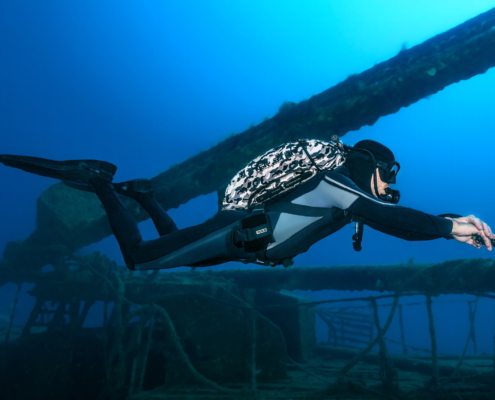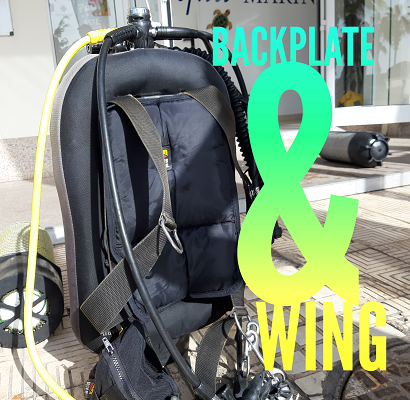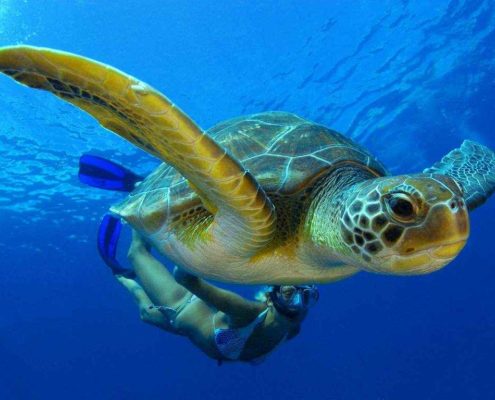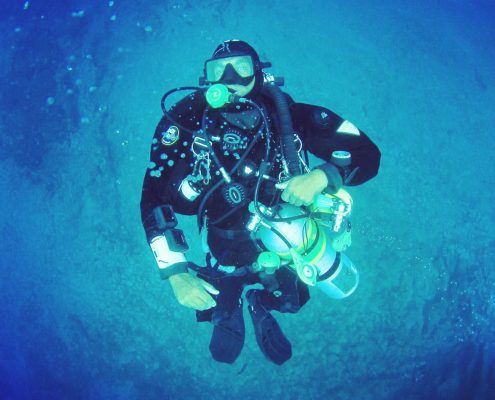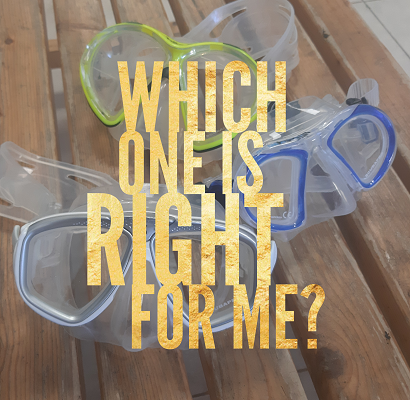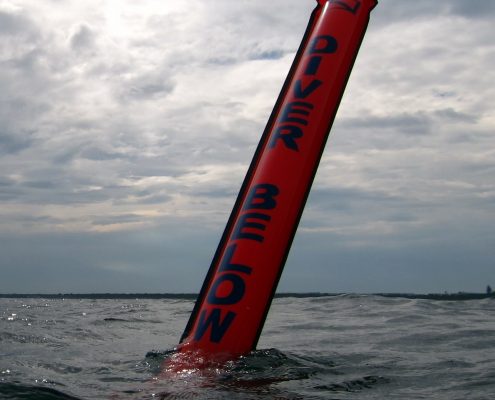How to choose a mask for diving
Some practical tips and advice
Okay guys, this post has come about through sheer necessity.
Having a mask which is both comfortable and makes an effective seal against your face makes such a tremendous difference to how much your will enjoy diving. In spite of this, there is still too much mystery and guess-work involved in identifying which masks will fit and which won’t.
There is one universal test which we are all told time and time again, but this test DOES NOT WORK! Here, I propose a much more effective solution to this problem.

The Negative Pressure Test
The negative pressure test is the one that you’ve heard before – it is the same advice which everyone regurgitates time and time again. You place the mask over your eyes and nose and inhale through the nose. The mask should stick to the face with no air entering around the edges. According to conventional wisdom, if the mask makes a seal then it will ‘fit’ you in the water.
Have you noticed how if you go into a dive shop and test every mask in the manner, at least 90% of them will seem to fit perfectly? That is because this test is flawed. Stop doing it!
Why is this test unreliable?
The problem with this test lies in the fact that by inhaling through the nose we are creating negative pressure between our face and the mask. This draws the edges of the mask inwards, usually increasing the surface area of the skirt against our face. This is not an accurate recreation of the conditions you’ll experience in the water.
When diving, the mask should be held in place only by the strap (more on adjusting the strap, later). Yes, water pressure will play a part: at times during the dive there may be a small amount of negative pressure inside the mask. For prolonged periods, however, this would not only become very uncomfortable (ever seen a bad mask-squeeze? They’re brutal) but very difficult to maintain as the diver changes their depth.
As the diver ascends towards the end of the dive, not only will the negative pressure be lost, but the pressure in the mask will swing in the other direction and become higher than the ambient water pressure, forcing expanding air to escape. This will happen to all divers on every dive, so we should surely account for it when selecting our equipment, right?
Rule #1: Don’t buy online
Exception: you can buy online under one circumstance – you’ve tried that mask before and you know you are happy with it.
On online discussions, I’m amazed at how many times I see a post like this: “I’m not happy with my mask – it always floods. Does anyone have any suggestions for a good quality mask which won’t leak on me?”
Alternatively, there are helpful respondents who will chime in with something like: “I’ve done over 200 dives with my Scubalens 3000 and its never given me any problems! Best mask on the market! You should definitely buy yourself one!”
Anyone get what the problem might be here?
We’re all different
Yes, each face is unique. Hardly a surprise, I hope.
The skirt of the mask is a gasket with an almost impossible job: to create a non-invasive, water tight seal between the rigid frame of the mask and the dynamic shape of a human face. Not only does our face move and change shape throughout the dive (experienced divers learn the benefit of hiding their emotions), but no two faces are exactly the same. We cannot expect one mask to fit every face. This is exactly why there are so many different masks out there!
Enough of the problem, what’s the solution?
Thankfully the solution is as simple as it is logical: find a mask which already has the same shape as your face. This way, you will never need to rely on water pressure to deform the mask to make an uncomfortable seal – the mask will fit well enough with equal pressure inside and outside.
The method is just as simple: tilt your head backwards so that you are looking at the ceiling. Place the mask over the eyes and nose, without inhaling through the nose. Next, have a friend or shop assistant walk around you to see if the mask skirt is touching your face all the way around. If no-one else is present, you can test this yourself by running your fingers around the mask, although I think a second person’s view is preferential.
This test helps identify the mask(s) which are already shaped to hold the same (or very similar) form as our face.
Do you see some gaps?
If there are any gaps where the mask skirt does not completely touch the face, then surely the mask is not *perfect*. If you are buying a mask then my advise would be: not that one.
However, another time this test becomes important is when diving on holiday and using rental equipment. Now the range of options is much more limited. It is quite foreseeable that none of the masks will fit perfectly, so how can you tell which mask will be good enough for you to make a couple of dives with?
If there are only very small gaps at the top or bottom of the mask then try securing the strap lightly to see if this fixes the problem. You should not need to pull the mask strap very tight at all! With the strap in place, a small amount of tension brings the frame of the mask closer to the face and will usually close up some of those small gaps at the top or bottom of the mask.
Important: If the gaps are at the sides of the mask then put that mask down – it is too big for you. Nothing you can do will change that.
Note: Some masks are designed for particularly small faces (for children, for example) and so be sure that your eyebrows are covered by the mask as well. If the skirt of the mask crosses your eyebrow then you will not get a good seal against your face.
Is that all there is to it?
Not quite – you may find a mask that has a similar form to your face, but does it give you enough space inside?
One common problem which people encounter is that the mask has too small an internal volume. Many people have a pronounced bridge between the nose and forehead. If you have this then you will frequently encounter problems with the mask pressing into this part of your face. This becomes especially true if the strap is too tight, which is the usual response to wearing one which doesn’t fit properly! This can be quite painful by the end of a day of diving.
Another problem could be from having a nose pocket on the mask too small or too high up. This can cause the mask to press on the under side of the septum (the part separating the nostrils), which become very uncomfortable in a short amount of time
For this reason I suggest wearing the mask for a few minutes while in the shop. Practice equalising your ears and clearing the mask. You are trying to see if you feel it pressing on any part of your face in any way which could become uncomfortable.
Again, it is useful to have an outside perspective here, as a second person can usually see inside the mask to tell you how much room you have around your nose.
You don’t want a mask which touches your face anywhere except the outside seal.
A quick note about facial hair
…It will usually cause problems. Some people are lucky but most aren’t. If the mask skirt does not sit against your skin then don’t expect it to make a seal, not matter how well the mask fits. If you don’t want to shave, you can try applying a small amount of petroleum jelly to the hairy area to help to close the gaps. It’s not perfect, but it will help. My best advise here is either shave or simply accept that you’re gonna get some water up your nose!
Other features to consider
One big difference between different masks is that the soft skirt – the part which seals against the face – can either be transparent or opaque. Historically, opaque masks were black, but these days there are many colours to choose from. The difference between the two is the amount of light which is let in. Transparent masks allow much more sunlight onto the face, which can create a more open and free sensation to the wearer. This is often desirable for new divers, who may feel less ‘boxed-in’ than when diving with an opaque mask.
Opaque masks may feel rather confining when you first try one on, but once you are in the water you will quickly realise that you only pay attention to the view you have through the lenses. Your brain filters out the rest; so this drawback of the opaque mask quickly becomes mute.
The main drawback of the transparent masks is that they can let in too much light. When diving on a sunny day in clear water (desired conditions for most divers!) then this can create problems. Sunlight will often shine through the transparent skirt and reflect on the lenses creating a glare obstructing the diver’s view. Once you first notice this glare it becomes absolutely impossible to ignore!
The strap – tight or loose?
The final note for now is about the mask strap. The strap should not be pulled too tight. Ever. If the mask fits your face well then over-tightening the strap will be either unnecessary or actively counter-productive.
Once you’ve found a mask that has the same form as your face, allow it to sit comfortably. Over-tightening the strap will misshape the skirt and potentially cause it to deform into a bad fit.
It is also increasingly common that mask straps are affixed directly to the soft skirt of the mask rather than the hard frame. Over tightening the strap will put a lot of tension on this connection, and often cause the soft attachment to tear.
As a starting point: I suggest placing the mask on, with the strap too lose to stay on your face, and then gradually pulling the strap snug until the mask is just capable of staying in place. Depending on the elasticity of the strap, you should be able to pull the mask away from your face a fair distance without too much resistance. If you encounter issues in the water, you can pull the strap a little bit tighter to see how that affects it – maybe it helps, maybe it doesn’t. Always make little adjustments and allow a few moments to see what difference has been made.
Up, down or just right?
The position of the strap also plays a big part in how comfortable it is and how well it seals. A general rule of thumb is that the strap should run around the widest part of your cranium. Usually, you can fit a finger between the top of your ear and the bottom of the mask strap.
If the mask doesn’t feel perfect, then try moving the strap into slightly different positions. Fairly obviously, this changes the direction of the tension against your face.
If the strap is too low, then usually the mask will ride down the face, often clashing with the regulator in your mouth. This is not the intended position of the mask and will almost certainly create problems.
If the strap is too high, it pulls the lower part of the mask tight and up into your septum (as described earlier) whilst also loosening the top of the mask – potentially compromising the integrity of the seal.
Improper position of the strap will create undesirable affects, however, note that I suggested a ‘general rule of thumb’. If you have what you believe to be a good fitting mask, yet you find it uncomfortable in the water, then try making adjustments to the strap – tighter or looser, up or down – to see if any of these changes make the mask feel better. Most of the time it won’t help, but the main theme here is that we are all different – you never know: it might work for you.
Final thought…
The mask you spend your money on has to look cool, too. You can’t go wrong with black.
Hope this helps.
Happy diving!

